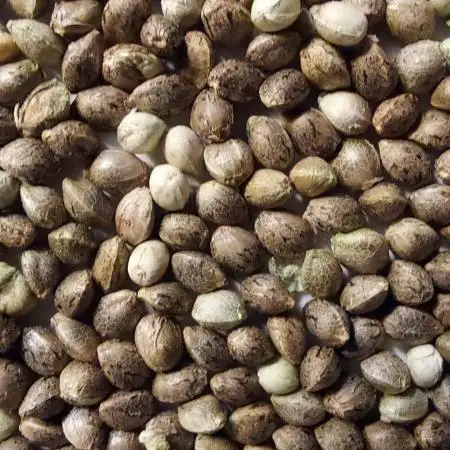The Grow Awards 2026 🏆 


















Lights
Zarayjustarted grow question 2y ago
Hi guys! What light should I get? The viparspectra xs1000 or the marshydro ts1000? I intend to grow in a 2x2 space. Would the viparspectra be as bright as the marshydro because its more efficient?
Solved
Setup. Lighting
likes
00110001001001111Oanswered grow question 2y ago
Mars is 343 umol/s, and the vipar is 270umol/s, if they aren't lying about efficacy. Since one is 100w and one is 150w, it's not just about quality. Technically, the xs1000 is better if it is a true 2.7umol/J light.
I cannot find any information on how many diodes there are. This number is acurate only if watts/diodes is near .20-.25w/diode - maybe even .3w/diode if they are best binning chips, but more likely they are not. If it's up around .4-.5w/diode, then it's more likely closer to the 2.3umol/J efficacy of the mars light. So, if you can get this info from vipar, it would help with the decision.
So, you want about 900PPFD on 12/12 cycle for photoperiods and 600PPFD for autoflowers on 18/6 cycle
These values are always going to be higher than what you can actually get, but that's okay, because 900ppf may be too much anyway.. you may need a bit more. this stuff depends on other local variables.
4ft/10.76 = .37 m^2
340 / .37 = 927 maximum PPFD -- this is enough for both autoflower and photoperiods in a 2x2 tent
270 / .37 = 729 maximum PPFD -- can be used for photperiods, but you'd be leaving some potential yiedl on the table. This is more than enough for autoflowers and may even need a slight dimming.
This info is for mature plants.
If you plan to exclusively grow autoflowers, either light is fine. I'd go with the xs1000 because you can save a few watts per month and a bit less heat produced from more efficient lights.
If you want to grow photos, i'd use the mars ts1000. You'll use more watts, but you'll be able to max out at 50g/sq ft and higher with this light and probably fall short of that with the xs1000 unless you measure from the taint.
The wattage differences at 100-150w relative to efficacy is small. 2.3 vs 2.7. The xs1000 is aobut 16% more efficient. it will produce 16% more photons per watt. you might run one light 10watts lower, which amounts to very little over time. .180kw-h/day x 30 is 5.4kw-hours on your electricity bill. 1.00-1.20 dollars more per month when operating full bore? 10dollars/year? you'll probably see more value in maximizing your time and effort per grow with an uptick in yields (photo only) than 10 dollars a year saved.
probably not growing full bore 365 days a year, so that's an exagerrated value, too. First few weeks of any cycle are low watt usage and you may take breaks.
You can verify all of this with specification sheets on samsung com for the LM301B or LM301H diodes (same exact diode despite different models). I have a sneaking suspicion the EVO chips follow that same line of deception. They are merely the better bin chips at each CCT but run at lower watts/diode, but could be wrong on that, but all the specs look identical except how hard they were run during the testing/measurements... i know for certain about the b vs h part, though.
Anyway, anything that deviates from the power they ran the diodes at for the spec sheets on samsung com means it will be less efficient than the spec sheet values. it will also dim faster (longevity.)
I saw one of the lights said it can last 100k hours.. that's bullshit. will it turn on after 100k hours, possible, but it'd be a shell of what it once was. If run at spec sheet for any brand/model, you can look up the longevity curve. for samsung lm301, it'll be 50-60k hours before they dim to 90% of original brightness, and it goes quickly downhill from there if you look at the shape of the curve. That's still a long time. the drivers when sold separately only come with a 7 year warranty.
heat is the key... if they run hot, they die faster. if you run more watts through the diode, they generate more heat and operate less efficiently than listed.
Krisisanswered grow question 2y ago
They’re both equally good lights. I’d go with whichever one has more value - price/life hours etc
likes
Complain
Similar Grow Questions
Solved

Viccrazyweed
Está mal si mis plantas están con 24h de luz en estado vegetativo?Setup. Lighting
3y ago
5
5
Solved

BullWeedDog
Que tiempo tengo que dejar mi ventilar encendido??Puedo utilizar el ventilador de mi cultivo solo cuando este encendida la bombilla?? es decir colocar que se prenda y se apague junto con la bombilla en el mismo ciclo o siempre debe estar encendido??Other. General questions
Setup. Lighting
Setup. Ventilation
4y ago
1
1
Solved

2smokeyy
Setting up air cooled refactor.I've got a new air cooled light refractor, a tube like one. I've set it up such as the pic, I'm thinking of putting the extractor where it shows on the pic with the air flow going the way of the arrow, would this be OK? I can't find anything online about setting this one up.
Other. Other
Setup. Lighting
Setup. Other
5y ago
2
2
Solved

TheGourmetWeed
Heat, RH or overwatering? Or alltogether?Hey my fellow growers!
The grow reached 32Celsius the last 2 days in the last hour before going into night time. On that time RH goes down to 32% and this seems like it's stressing this lady a bit.
Yesterday fed her nuts - maybe a bit too much?
Thank you for stopping by!
6y ago
2
2
Solved

NarcissisticEcho
Light intensity? Should I dim?I'm having a light-science question.
I have 5 bulbs, 11w each, total 55w. I know this is not much but anyway. Should I dim the lights for seedlings even If I have this low setup?
I mean, does light intensity affects seedlings' health? Or 55w can work on a maximum level?Other. General questions
Plant. Too short
Setup. Lighting
4y ago
2
2
Solved

Jhort
Need LED light recommendationI'm growing in a 2x2 grow tent with (1) 54watt full spectrum optic led. I'd like to add a led light for less then $100 that will help cover the tent. when it's 100% full of flowering canopy. I'm not hitting my corners evenly as is. What light is best for my situation?Setup. Lighting
5y ago
4
4
Solved

Theia
1 light or 2I have recently purchased a Mars hydro SP 3000. Great light.. It replaces my Blurple Mars hydro exo 120. I wanted to ask what peoples opinions are about me using both lights for veging. My grow space is not that big. 1.8m x 0.8m and 2.35m high. Will it be too much light and heat?Setup. Lighting
5y ago
3
Solved

Igrowneil
Hey anyone else in UK having temp problems ... I've I switched to hybird lighting
Today it's set as
12 hours HPS with 24 hours LED
AUTOS are doing amazing 👏 none the less there 20" inch day 29 entering stretch, been TOPPED and ScrOG will be applied soon 😀
Solutions ?
Week 5
Setup. Lighting
4y ago
2
3
Solved

ToRuL88
A cuanto % de potencia pongo el led en crecimiento y en floración led 650wUso el marsh hydro fc e6500 650w en armario de 1.50x1.50 y 27 plantas, alguien sabe si poniendo el led al 40% de potencia está bien para la segunda semana de crecimiento? Luego voy subiendo? Hasta llegar al 100% por favor no encuentro información de este tema por internet. THANKSSetup. Lighting
3y ago
2
2
Solved

I_T_C_R_W___GROW
perfekt small grow - what is needed? What a perfekt light needs or should have?What features should a universal Growbox have ?
And what a perfekt light (for a 50x50cm Area in this box ) must have- for seed / settling/grow/& bloom & maintaince like holding a Mother near endless? Can you all help me to build the perfect diy box?2mo ago
1
3
Solved

jacock
Sun or not Sun?I heard the the babies plant should not take the direct sunlight, it's true or not?Setup. Lighting
6y ago
3
3
Solved

Chaweeder
Are all Amazon lights Garage,I wanna buy some pretty descent LED lights, but dont have tons $$$$ my plan is eventually to get up to 20 autos in 1 room? I dont wanna spend 1500$ per light, but 500$is ok. I will buy more of these 500$ lights to fill up my 8X12X8 room, a few at a time, I dont wanna buy crapSetup. Lighting
6y ago
4
Solved

PapaBaer
LampenwechselLampenwechsel in der Blüte....
Ich würde gerne auf LED umstellen macht das den Damen etwas. Also im negativen Sinne.
LED Mars Hydro 480/96LEDs
Other. General questions
Other. Other
Setup. Lighting
5y ago
2
Solved

Dean1
LUMii tima settingsCould someone please tell me what the 12/12 setting is on a LUMii tima ballast tryed it on flower picture to the right and noticed light on when it was supposed to be off Does it have to be left unplugged so long so timer start from zero wanting to use 2lights got a new addition
Setup. Lighting
5y ago
2
2











